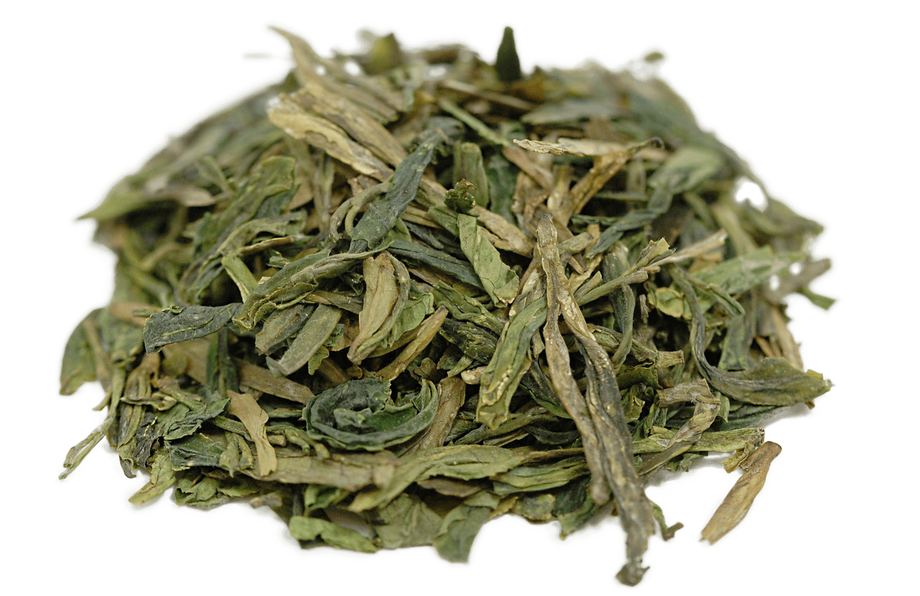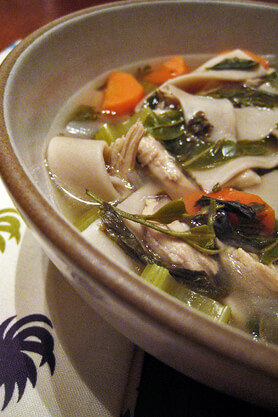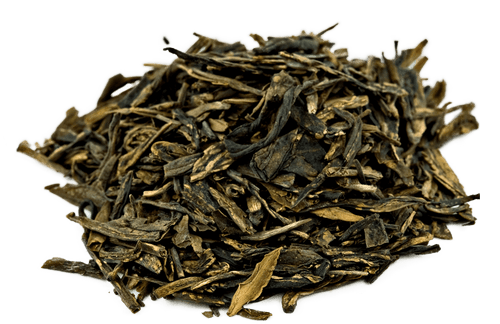Organic Emerald Spring Lung Ching Green Tea
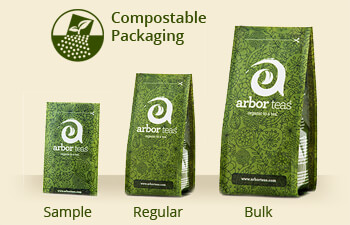
One look at the young, delicate leaves and buds of our organic Emerald Spring Lung Ching Green Tea (or Long Jing) is all it takes to gauge the superior quality of this organic green tea. The beautiful spring leaves have been hand pressed paper-thin in the lung ching style during manufacture, taking on the feel of tiny feathers. Grown and produced in Zhejiang, the traditional home of dragonwell tea, this is an exceptional organic loose leaf tea representing one of the most well known styles of Chinese green tea. The leaves yield a light green infusion that is buttery-rich and savory green, reminding of asparagus tips, snow peas and chestnuts. This organic Chinese tea is a real treat for the green tea lover and it is now Fair Trade Certified!
For a more affordable Lung Ching, please check out our Organic Dragonwell Lung Ching Green Tea.
Ingredients: organic and Fair Trade Certified Chinese green tea
Origin: Yiwu Yueran Organic Tea Professional Cooperative, Zhejiang Province, China

Located in one of the most important provinces of China for tea production and tea culture, the Yiwu Yueran Organic Tea Cooperative consists of approximately 32 rural smallholder member farms. Yiwu (not to be confused with the mountain of the same name in Yunnan) is located in central Zhejiang and known for its beautiful plum blossoms drawing large crowds every February. Zhejiang province boasts an ideal climate for tea production. Its distinct seasons offer a more temperate and less volatile summer than its southern neighbor, Fujian, and greater annual precipitation than the tea growing regions to the northwest. As a result, Zhejiang is renowned for producing some of the highest quality tea in China. It is also the traditional home to several of the most iconic Chinese green tea production styles including long jing (or lung ching), gunpowder, and anji bai cha.
Steeping Instructions
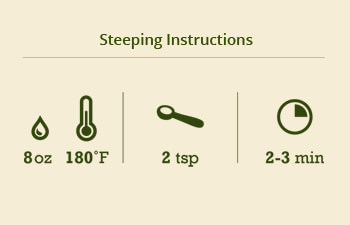
At Arbor Teas, we believe tea should be brewed to suit your personal taste. We’re happy to make recommendations to get you started, but don’t hesitate to experiment! When brewing your tea, your main considerations are tea quantity, water temperature, and steeping time. We recommend green and white teas to be steeped for 2 to 3 minutes in water heated to not-quite-boiling, just as bubbles begin to form on the bottom of the pan (approximately 170 to 180 degrees F). For the best flavor, use fresh water whenever possible. Try not to steep your tea longer than necessary, as you’ll extract undesirable bitterness from the leaves. If you want a stronger brew, don’t steep longer, just use more tea. And don’t forget to re-steep your tea leaves to get the most out of your leaf!
Looking for more info? Check out our How-To Guides and Eco-Brewing Tips!
Staff Perspectives
 Lea
Lea
"This is a great gift for green tea lovers, and it has such a beautiful name!"
 Caroline
Caroline
”This reminds me of chewing on a blade of grass while walking through a late-summer field - sweet, slightly vegetal, and nutty."
 L’Oreal
L’Oreal
”Delicate vegetal tea with nutty undertones. Perfect for enjoying while sitting in a garden."
Health Benefits
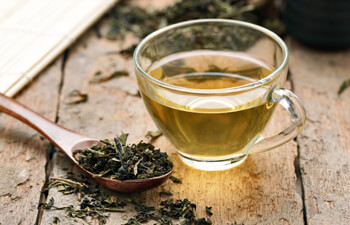
Like all true tea, green tea offers many potential health benefits. Research has found that tea (Camellia sinensis) can have many positive effects on human health, including improved cardiovascular function, cancer risk reduction, improved immune function, improved oral health, and help with weight management. Tea is also full of polyphenols, which are a class of antioxidant that help your body maintain homeostasis and balance your stress levels.
Green tea specifically is known for its array of health benefits, which have been supported by a growing number of studies. Green tea research has demonstrated that it may be an effective anticancer agent for breast cancer, lung cancer, kidney cancer and prostate cancer, among others. Studies have shown a link between green tea and weight loss, and the ability to modulate energy metabolism, aid in body fat regulation, and possibly promote preferential loss in abdominal fat. Research has also shown that green tea may increase performance for short term memory tasks, as well as being increasing potency of antibiotics. Other peer-reviewed studies link green tea to healthy skin, help with lowering cholesterol, and regulating diabetes. It’s important to keep in mind that many of these studies monitor subjects who drink several cups of green tea per day.
For more information about the health benefits of green tea, and for direct sources of the above information, check out our Tea Health Benefits page!
Please note: the information above is for educational purposes only and has not been evaluated by the Food and Drug Administration. This information is not intended to diagnose, treat, cure, or prevent any disease.
Lung Ching Recipes
Lung Ching Lore
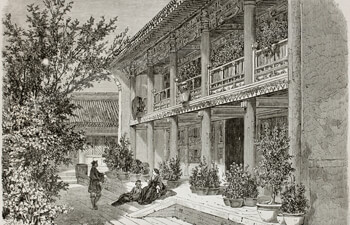
There is an incredible amount of Chinese lore surrounding Dragonwell (lung ching or long jing in Chinese), with each tale more mystifying than the last. One tale tells of an old woman who had a house near a crossroads, and as passersby came and went she gave them tea. She had no more than an old mortar and two tea trees. One winter, an old man came to her and gave her money. In this story, it is implied that the old man was a wandering spirit who enjoyed the tea and the service the old lady provided. Noticing that she was in trouble, he tested her dedication to tea. After seeing that she was faithful to her brewing method, and that she cared well for the mortar and tea trees, the spirit left her enough money to make it through the difficult winter, and blessed her with the ability to grow tea trees.
Dragonwell Tea is considered the tea of royalty and has a specific manufacturing process that was perfected on Lion Peak Mountain (a mountain in the western part of Zhejiang province). Its manufacturing technique has been emulated by numerous other areas in China, but the most authentic Dragonwell teas comes from the West Lake District. One of the many differentiating steps during its manufacture is the hand-roasting in a wok. There are two temperature ranges necessary for proper roasting: a lower temperature range (140-160 degrees F) to burn off the tiny white hairs that naturally cover the leaves and remove most of the water; and a higher temperature range (175-212 degrees F) for 12-15 minutes to broaden and flatten out the leaves. Tea craftsmen and women may spend up to 3 years learning their craft and earning their title.
For even more information about this and other traditions, visit our Tea Traditions page!




